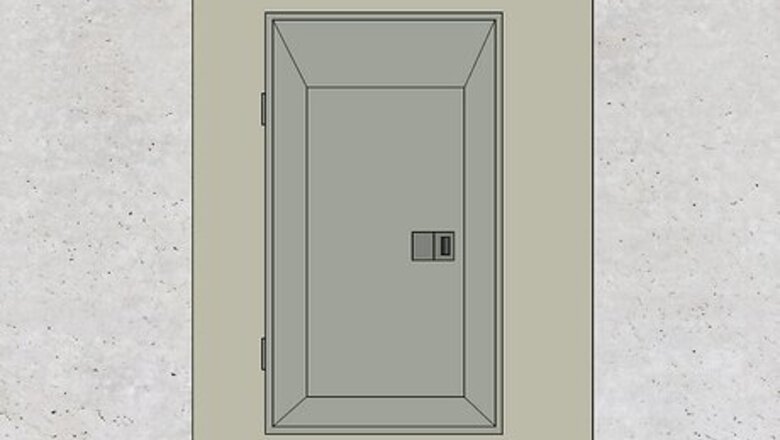
views
Flipping a Tripped Breaker
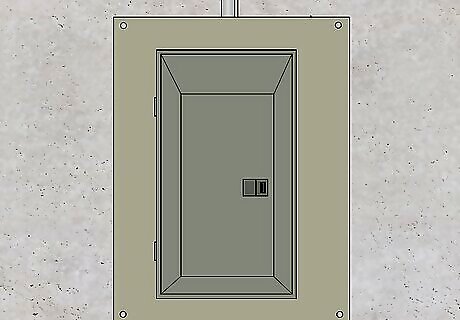
Locate the breaker panel in your home. You can usually find it in the basement of your house or in a utility closet. The breaker panel will look like a large, rectangular box mounted on the wall with thick wires heading into it. Breaker panels are often painted grey with a black latch on the lid. You can often find the breaker panel on the opposite side of the exterior wall that the power line runs into.
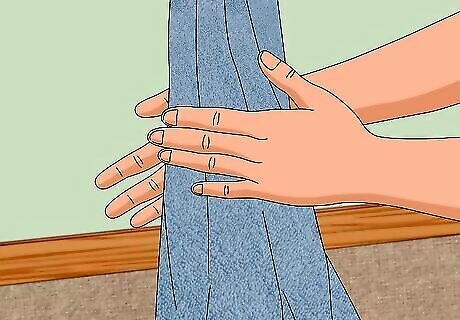
Check your hands for moisture. Wipe your hands on your pants, shirt, or a towel to make sure they aren’t wet at all. Breaker panels manage and distribute a great deal of electricity. Touching them with wet hands increases your chances of being shocked. You can wear rubber gloves to ensure there’s no moisture on your hands, but it isn’t considered necessary. Err on the side of caution and dry your hands if you think they are even slightly damp.
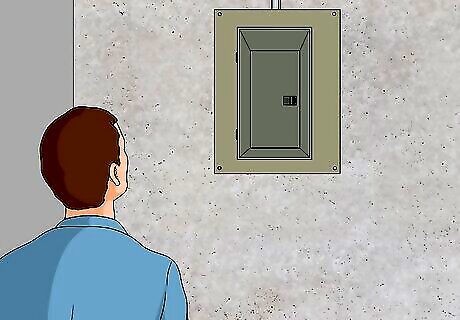
Stand to one side of the panel. If anything were to go wrong with the breaker panel, standing off to one side could prevent your body from taking the brunt of any sparks or electrical charge it releases. Most panels open from left to right, so standing to the left of the panel will often give you the best visibility with the lid open. While breakers are rather safe, small precautions like this could save your life if anything were to go wrong. You don’t need to be far off to the side, just aligned so your body isn’t directly in front of the panel.
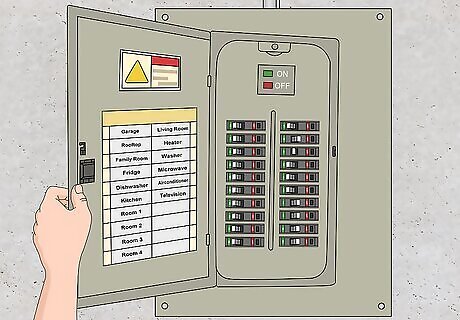
Open the breaker panel lid with one hand. Never touch the breaker panel with two hands at once, or you could create a circuit with your body that allows current to pass through. Instead, reach out with just your dominant hand and release the latch on the breaker panel lid. Most panel latches can be released by pressing them up slightly and then pulling the lid out toward yourself. The lid is on hinges and will swing open.
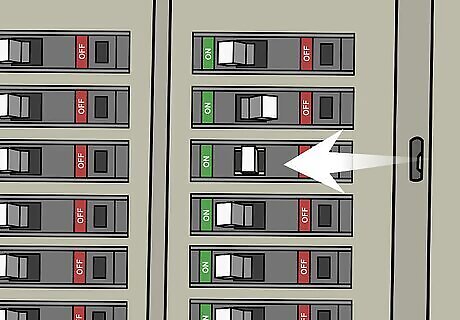
Look for any switch that is fully or partially tripped. All of the breaker switches that are still functioning properly will be switched to the side that says "on." The tripped breaker won't be all the way "on," but it might not be all the way to the "off" side. If any of the switches are even slightly misaligned with the rest (moved slightly toward the center), then they are no longer allowing electricity to flow through them. A barely flipped switch and a completely flipped switch will both have the same effect on the flow of electricity through your house. Look closely at the switches and how they align with one another. There may be more than one that’s been thrown.
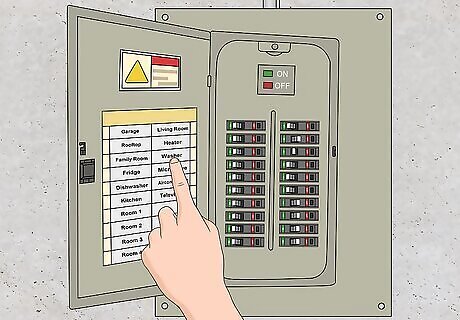
Refer to the breaker diagram if you need help finding the tripped switch. If you’re still having trouble finding the flipped breaker switch, look on the inside of the breaker panel lid for the diagram. The electrician that installed the breaker panel should have written which switches power different rooms or portions of the house. Read the diagram to find the portion of the house that has lost power and use that to find the switch associated with it. If there is no diagram, you will have to rely on finding the flipped switch visually.
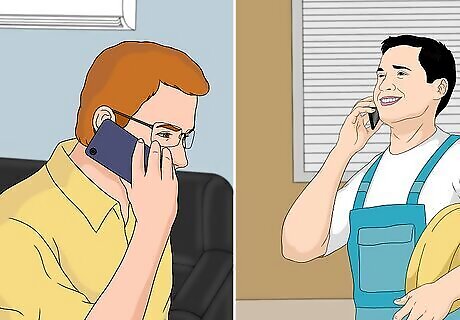
Call an electrician immediately if the breaker panel feels hot. Breaker panels should never feel hot to the touch. If you feel heat coming off of the panel as you’re looking for the flipped switch, step away from the breaker immediately and call a certified electrician. If the breaker panel starts making any loud noises, you should also call an electrician. Never, under any circumstances, open a breaker panel up to try to diagnose issues yourself. You should always have the help of a certified electrician when trying to work on your house’s electrical system.
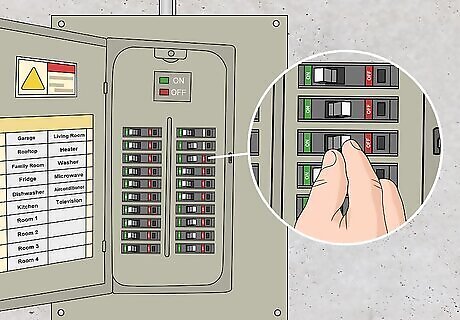
Flip the switch all the way to the "off" side. Once you’ve found the flipped switch, use one hand to turn it all the way off. Most breaker switches won’t allow you to turn them back on until they have been completely shut off. Grip the switch with the thumb and index finger of one hand and flip it all the way to the "off" side. Remember, do not touch the panel with both hands at once.
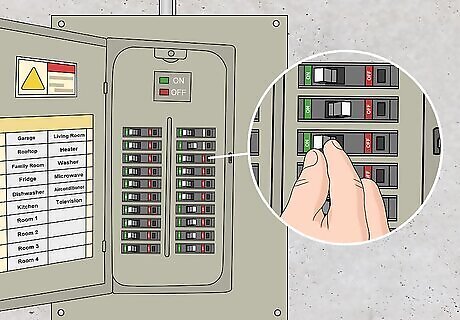
Turn the switch all the way back to the "on" side. Once the switch is all the way off, use the same two fingers to flip it back to the "on" side. This will allow power to flow through it once again. As soon as you flip the switch back "on," the power should return to the part of the house where it was out. If the power doesn't come back on after you flip the switch, your circuit likely needs repairs. Remember to look for multiple switches that may have been thrown. You may need to turn more than one on.
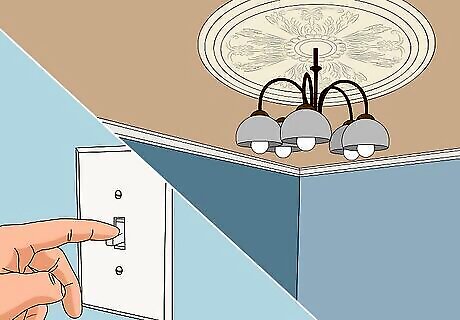
Check to ensure the power is working. Check the part of the house that the power had been out in. The lights and outlets should now be working again. If they are not, you may have flipped the breaker for the wrong portion of the house. Go back to the breaker panel and examine it again for any other flipped breaker switches. If power still doesn’t flow to the part of the house, you will need the assistance of an electrician.
Resetting a Main Breaker
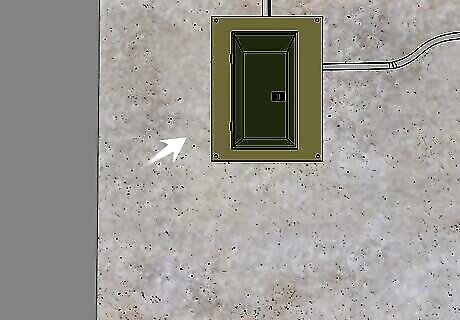
Find the breaker panel. In most houses, the breaker panel can be found it either the basement or a utility closet near the kitchen, laundry room, or bathroom. The panel itself looks like a large, rectangular steel box with thick wires running into it. The panel can usually be found on the opposite side of the exterior wall the power lines connect to. If your entire house loses power, resetting a main breaker may restore it.
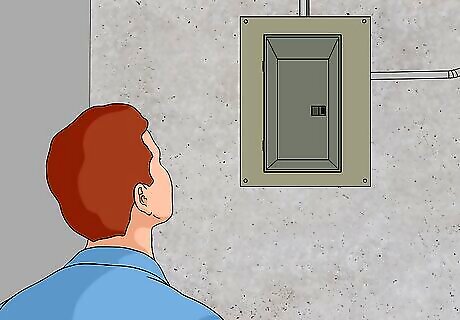
Stand to the side of the panel. If the breaker panel is damaged or failing, there’s a risk that you could be injured. Standing to one side of the panel reduces the chances that any sparks or debris could hit you if something were to go wrong. Breaker panels are very safe, but small safety precautions can mean the difference between life and death in unlikely situations.
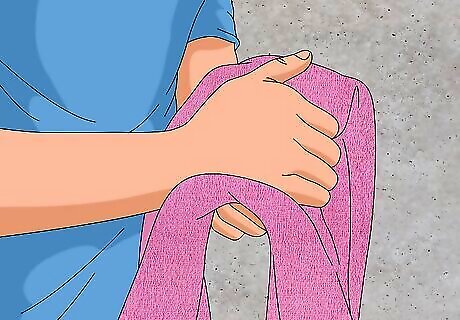
Make sure your hands are dry. Wipe your hands off on your pants, shirt, or a towel if they’re moist at all. It’s not safe to touch a breaker panel with moisture on your hands because it could make your hands more conductive and increase the likelihood of shock or electrocution. Wearing work gloves can alleviate this concern but aren’t considered a necessary safety measure. If you’re not sure if your hands are dry enough, wipe them off one more time for safety.
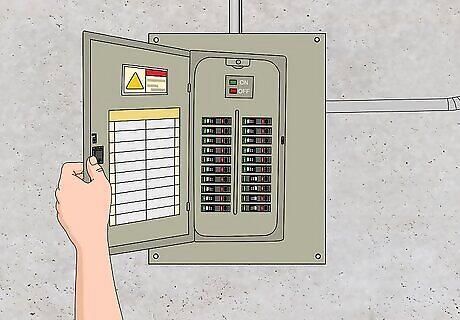
Open the panel lid using only one hand. Reach out to the release on the panel lid with your dominant hand and slide it up to release the latch. Then simply swing the lid open on its hinges. The panel lid will open like a door. Never touch the breaker panel with both hands at once.
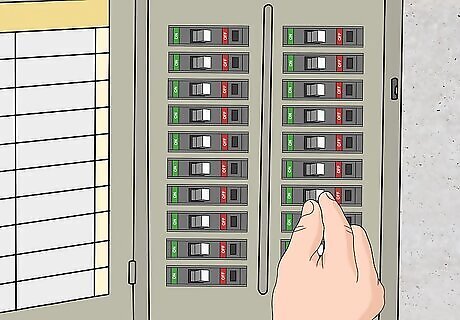
Turn off every breaker one by one. Use your thumb and index finger to flip the top left breaker switch all the way to the "off" side, then work your way down to the switch below it and so forth. Keep going until you have flipped every switch to the "off" position. Flip the switches one by one. Some switches may be connected to one another. Those are fine to flip together.
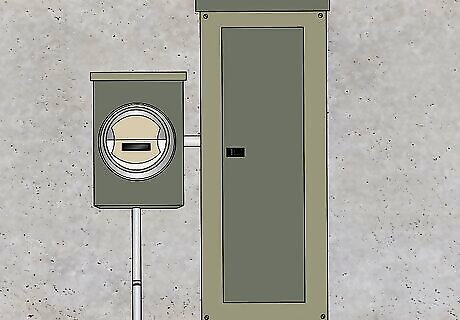
Locate the main breaker near the electric meter if it’s not in the panel. The main breaker is often at the very bottom of the breaker panel and labeled. However, in some cases, it may be located in another panel near the electric meter on the outside of your house. If you don’t see it in the breaker panel, go outside and find your power meter. Then locate the panel it’s connected to. The power meter and panel are located where the power lines connect to the external wall of your house. Do not touch the meter itself.
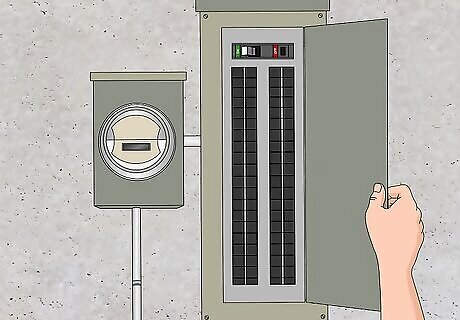
Pull open the main breaker lid with one hand, if necessary. Release the latch on the main breaker’s lid by sliding it up with one hand. Then pull the lid open on its hinges just like you would open a small door. Do not touch the main breaker panel with two hands at any time. Do not attempt to do this in the rain. Wait until it’s dry to open the main breaker’s lid.
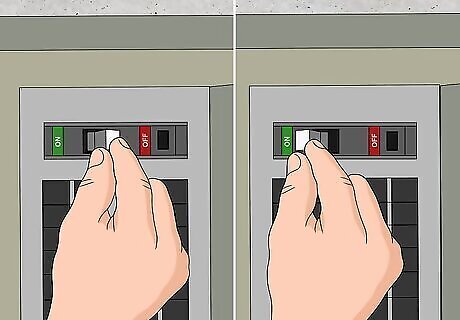
Flip the main breaker to "off" and then back to "on." The main breaker will be the only switch inside its panel if it's separate from the breaker panel itself. Locate the switch in either place and use your thumb and index finger to flip the switch all the way to “off," and then back to “on.” Although you switched it back to “on,” this often won’t reset the main breaker, and your house will still be without power. Remember, even if the power comes back on, all of the individual breakers are still off, so the lights won’t come on.
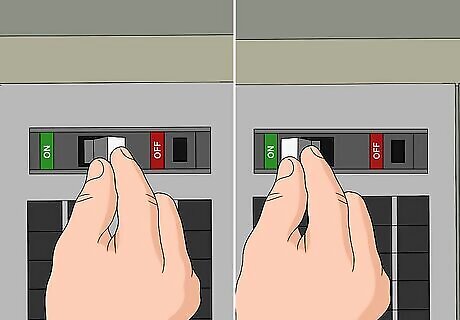
Turn the breaker off and on one more time. Many breakers need to be turned off and on again twice to be reset. Flip the switch all the way to the "off" side again, then back to the "on" side and leave it at the “on” setting. The power should now be flowing in your house again. You won’t know if this worked until you turn all the individual breakers in the breaker panel itself back on. Close the lid on the main breaker panel if it’s outdoors at this point.
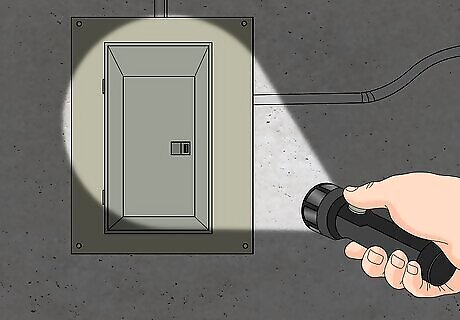
Go back to your breaker panel if separate from the main breaker. Make your way back into the house and down to the breaker panel. Remember to use a flashlight if it’s too dark to see in your house. Stand to one side and open the lid just as you have before. Remember to make sure your hands are dry and only to touch the panel with one hand at a time.
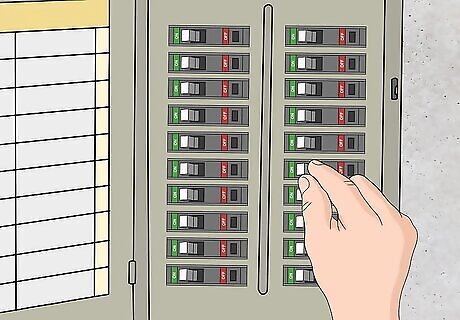
Flip each switch back to on, one at a time. Start at the top and work your way down. As each switch is flipped, the power should be restored to that portion of the house. If the power does not come back on at this point, there may be an issue with the flow of electricity into the house. Contact your power company to help determine if power is not reaching your home breaker panel. If the lights do come back on, close the panel back up.


















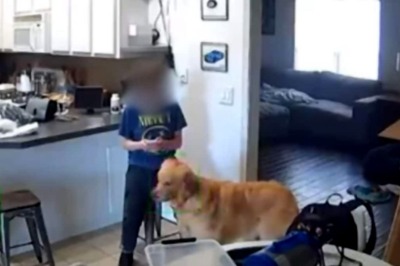
Comments
0 comment